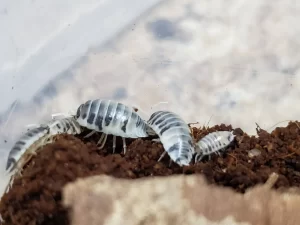
Mycotoxins are natural compounds, produced by certain fungus and moulds. It is likely that there are thousands of different mycotoxins in the environment and yet we only know of and can identify a few. Unfortunately, when mycotoxins come into contact with animals, be it through ingestion, inhalation or absorption, pathological changes within the animals can occur. It is also known that the cumulative effect of multiple different mycotoxins can be more harmful to an animal than one type in isolation. The effects of mycotoxins are more widely reported in livestock production where even slight challenges to the animal’s health are noticeable in reduced milk yields or growth rates for example. When it comes to horses, much less is known about the impact of mycotoxins but the general rule is always to use high quality horse food and avoid mouldy and spoiled materials.
Sources of Mycotoxins
Feed that mycotoxins have been found present within include:
- Cereal grains such as oats and barley
- Fibrous materials used in feeds such as oatfeed
- Forages
As moulds produce mycotoxins, any horse food that can go mouldy can potentially be a source of mycotoxins. It should be noted however, that there may be no mould apparent to the eye but mycotoxins can still be present.
Wet harvest conditions for cereals often see an increase in mycotoxins simply because the damper grains are more likely to go mouldy. Once the materials are in storage, it is important they are kept dry to avoid mould developing.
One of the most commonly researched moulds is aspergillus due to its impact on human health in the form of aspergillosis. It produces mycotoxins known as aflatoxins and it is suggested that the presence of aflatoxins may be related to how virulent the aspergillosis is. There is a legal limit for the presence of aflatoxin in animal feed including horse food due to its potentially damaging effects to human and animal health.

Other moulds and the mycotoxins they produce include
- Claviceps – ergot
- Fusarium produces fumonisin, zearalenone and deoxynivalenol (DON) some of the most serious mycotoxins for livestock
- Penicillium – patulin
Studies have shown that commonly used feed materials often contain mycotoxins but most are usually at levels that don’t present any issues to the horse’s health. It is important to consider that moulds and mycotoxins are naturally occurring in the environment and healthy animals and people are usually well equipped to deal with them. Problems can occur though when levels of mycotoxins are very high or in animals that are immune-suppressed or challenged for some reason. This is why it is even more important to ensure that feed materials used for youngstock, veterans or those with problems such as liver disease are of the highest quality possible.
Additional Techniques to Reduce Mycotoxins
Farmers and producers of horse food can use disease-resistant varieties to reduce moulds and mycotoxin formation but factors such as the weather are beyond their control. Being patient and waiting for the best time to harvest hay and haylage is key – damp forage that hasn’t been dried properly before baling is a higher risk for mould and therefore mycotoxins.
Whilst mouldy feed materials should never be used, there are products that can be added to feeds that are known to bind mycotoxins which stops them from becoming established in the animal. Products such as bentonite clays and yeasts are often promoted as binders and may come in a package with other materials designed to boost immunity in the animal to help them fight off the challenge of mycotoxins. Whilst they should not be relied on as a way of feeding poor quality feed, they can be useful in situations where there is no alternative but to use higher risk materials – mycotoxins can be present in pasture for example and if moving yards or farms isn’t feasible, reducing the risk of issues by using a mycotoxin binder is a sensible approach.








